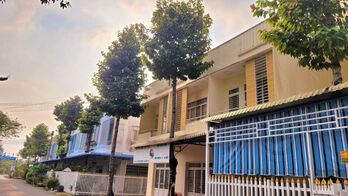
Harvesting the 2020 spring rice crop in Hoa Binh commune of Vu Thu district, Thai Binh province. (Photo: VNA)
Data from the Ministry of Agriculture and Rural Development in 2020 shows that the level of mechanisation in agriculture is increasing in the pre- and post-harvest stages. Specifically, the rate of mechanisation of agricultural land preparation reached 94 percent; 42 percent of sowing and planting care reached 77 percent and that of rice harvest reached 65 percent, according to Ken Research.
Compared to 2011, in 2019, the number of tractors across the country increased by about 48 percent, combine harvester increased by 79 percent, and agricultural dryer increased by 29 percent. The farm power availability reached about 2.4 HP per ha cultivated.
Due to rapid urbanisation, most of the farmers are shifting to construction and services sector in the hope of earning more wages. Consequently, this has led to a shortage of agriculture labour in Vietnam. This has acted as a major driver for the implementation of machinery in agriculture. The transition of occupational structure from agriculture to other sectors is rapidly occurring in the four regions, namely the Red River Delta, the North Central and the Central Coastal areas, the Mekong River Delta, and the South East.
The demand for agricultural machines decreased during the COVID-19 pandemic. This was due to low production and closure of dealerships and retail shops during lockdown. This was further fuelled by decrease in farmer's income which led to postponing of agricultural machinery purchases.
Additionally, agricultural equipment companies experienced cash flow difficulties due to the fact that most of the imports were banned and local manufacturing and assemblies were shut down. The demand for machines in the country remained low at the starting of 2020, however there was an increase in demand in the second half of the year post ease in confinement. Slow recovery is expected in 2021.
Analysts at Ken Research observed that Vietnam is a growing agricultural machinery market in Southeast Asia and is slowly recovering from the pandemic. The increasing credit availability in the country along with exemption in taxes is driving the growth of the industry.
Increasing focus on promotional and marketing activities, new product launches, partnerships & collaborations are expected to drive the industry in the future. The country’s agricultural machinery market is expected to grow at a compound annual growth rate (CAGR) of 6.4 percent on the basis of sales revenue over the forecast period 2020-2025./.
VNA




